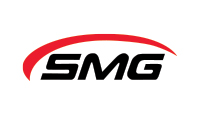August 6, 2013
New Markets for Traditional Manufacturing With 3D Printing
POSTED BY
Josiah FreyTAGGED
SHARE
For a few years now the “next big thing” has been the emergence of 3D printing and how it was supposed to revolutionize how we view manufacturing. However, high costs and a lack of proficiency in technical programs have limited that adaptation, at least until now. It appears that 3D printing—the use of a desktop machine to build objects from liquid plastics, metals or other base materials—may truly be poised to make a real emergence in the marketplace. Prices for machines have dropped and software programs are being integrated into everyday operating systems like Windows 8.1. People can now choose a blueprint for a coffee cup, download it, and tell a desktop 3D printer to make it. While that simply may be “cool” to many people, it has the potential to be a true force in the marketplace and create homegrown consumer manufacturing. I personally know of a few people who are using this technology as an aid in business start-up. The true personalization of products is the real upside of this technology, but it will probably require a surge in some forms of traditional manufacturing. For every 3D printed product, there has to be someone producing the special polymers and materials used by these machines, and those usually aren’t produced in your neighbor’s basement. So while there will be an emergence of household manufacturing, the underlying reality is that traditional manufacturing processes will find a new place in the consumer market.
